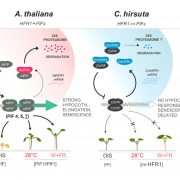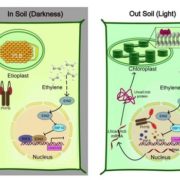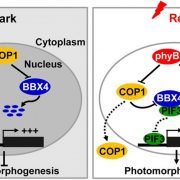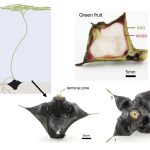Interconnected: Hydrotropism and phototropism in Arabidopsis root growth
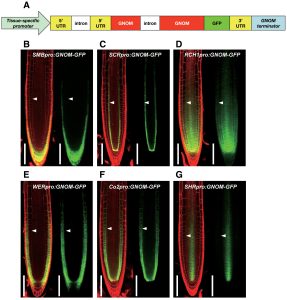 Tropisms enable plants to shift their growth direction in response to environmental changes. The roots of Arabidopsis plants respond to gravity by growing in the direction of gravity, a phenomenon known as gravitropism, while in response to unilateral blue light they bend away, demonstrating phototropism. Additionally, roots respond to moisture gradients by moving toward areas with greater water availability, resulting in hydrotropism. In this research article, Lei Pang and colleagues investigate the function of the proteins MIZ1 (MIZU-KUSSEI) and GNOM/MIZ2, which were previously isolated as ahydrotropic mutants, and attempt to determine their role in phototropic and hydrotropic responses of Arabidopsis roots. The study shows that MIZ1 has a role in recovering a complete phototropic response and hydrotropic response in Arabidopsis roots when expressed in the cortex of the elongation zone in miz1. The expression of GNOM in tissues- epidermis, cortex, or stele, is required for the full induction of these tropic responses in the roots. The function of MIZ1 and GNOM in the tissue elongation zone suggests a crosstalk between these tropisms. The discovery of MIZ1 and GNOM/MIZ2 as key actors in both hydrotropism and phototropism sheds light on how various environmental stimuli are coordinated during root growth. This study adds to our understanding of how plants use information from their surroundings to improve their growth and development. (Summary by Arpita Yadav arpita_yadav_). J. Exp. Bot. 10.1093/jxb/erad193
Tropisms enable plants to shift their growth direction in response to environmental changes. The roots of Arabidopsis plants respond to gravity by growing in the direction of gravity, a phenomenon known as gravitropism, while in response to unilateral blue light they bend away, demonstrating phototropism. Additionally, roots respond to moisture gradients by moving toward areas with greater water availability, resulting in hydrotropism. In this research article, Lei Pang and colleagues investigate the function of the proteins MIZ1 (MIZU-KUSSEI) and GNOM/MIZ2, which were previously isolated as ahydrotropic mutants, and attempt to determine their role in phototropic and hydrotropic responses of Arabidopsis roots. The study shows that MIZ1 has a role in recovering a complete phototropic response and hydrotropic response in Arabidopsis roots when expressed in the cortex of the elongation zone in miz1. The expression of GNOM in tissues- epidermis, cortex, or stele, is required for the full induction of these tropic responses in the roots. The function of MIZ1 and GNOM in the tissue elongation zone suggests a crosstalk between these tropisms. The discovery of MIZ1 and GNOM/MIZ2 as key actors in both hydrotropism and phototropism sheds light on how various environmental stimuli are coordinated during root growth. This study adds to our understanding of how plants use information from their surroundings to improve their growth and development. (Summary by Arpita Yadav arpita_yadav_). J. Exp. Bot. 10.1093/jxb/erad193



